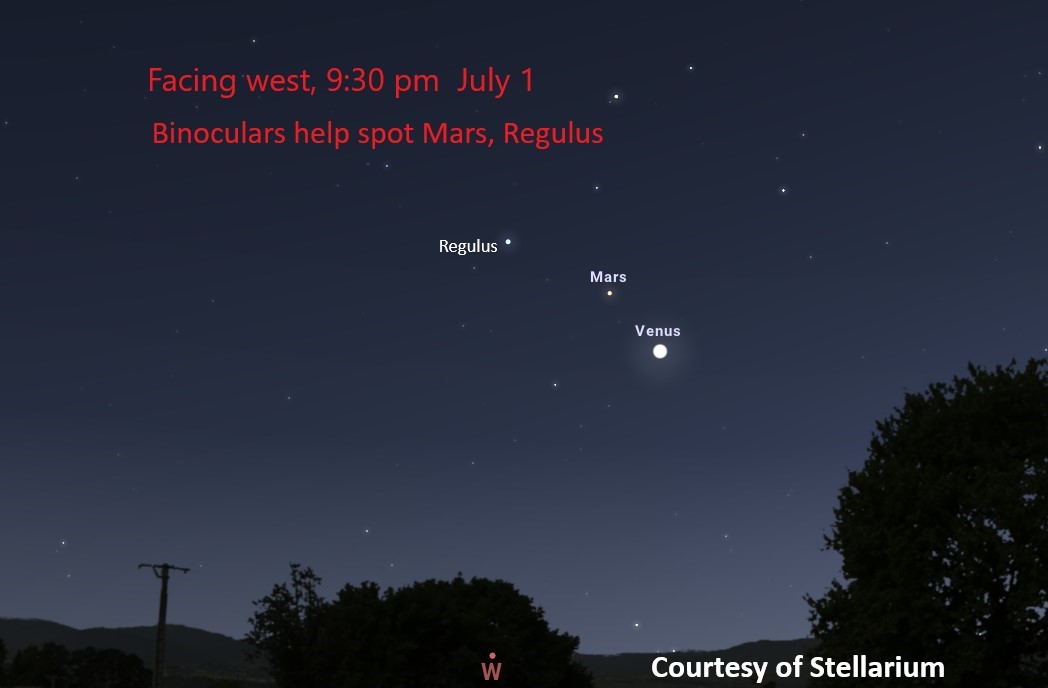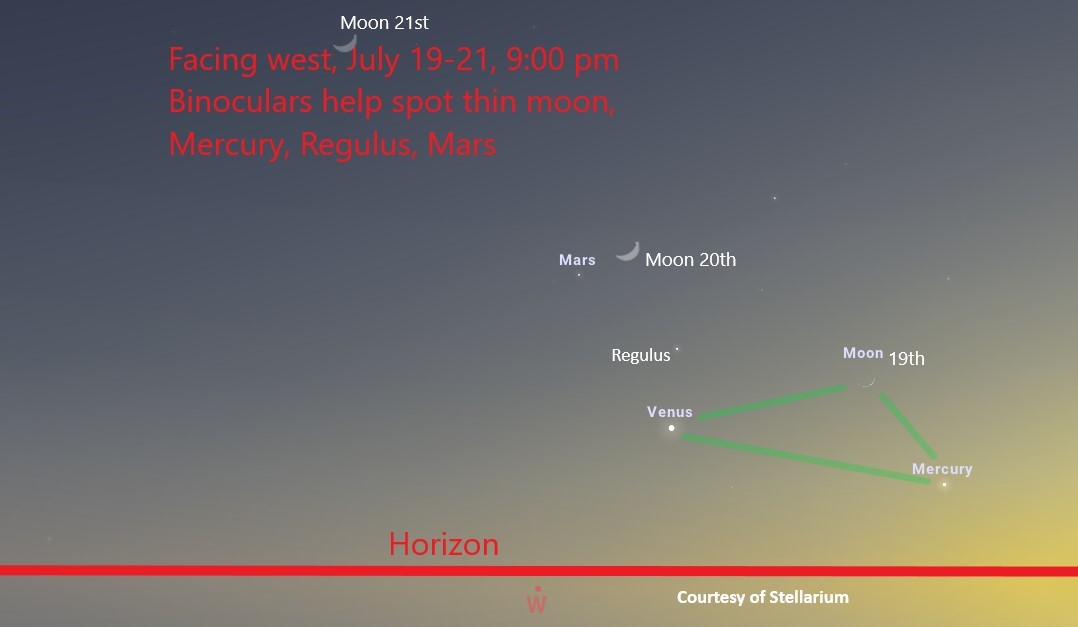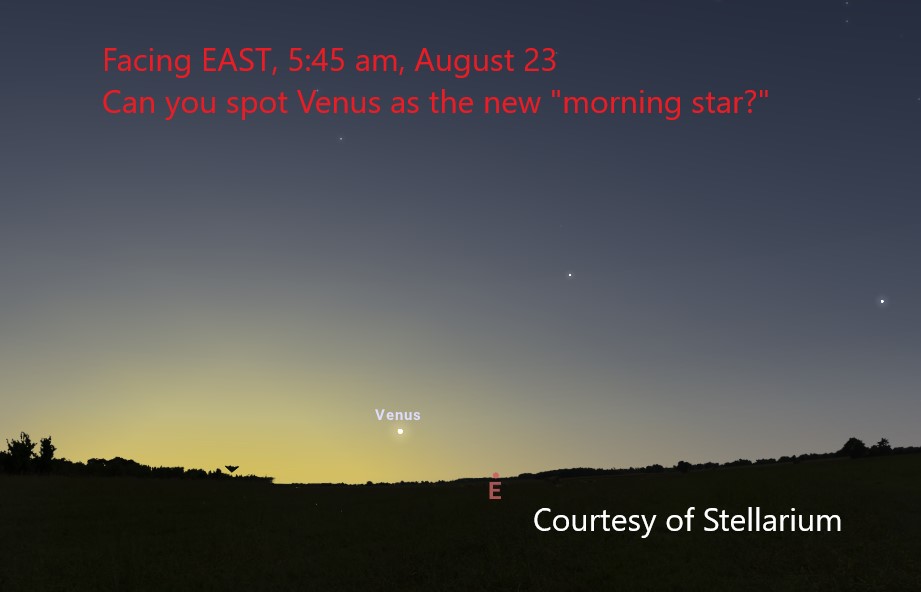GOODBYE AND HELLO AGAIN
The planet Venus has reigned over our evening skies for many months. As I mentioned to many of our visitors at our June 23 Gateway to the Stars event, virtually everyone has seen Venus before, as it can shine brilliantly in the western sky for nearly four hours after sunset, as it did this past May. Those with insomnia or who have to rise early for work can see it equally prominently in the eastern dawn skies, at the right season.
The visibility of Venus was well known to the Maya civilization and recorded by their astronomers, who noticed a never-ending 584 day cycle. I described this in some detail in the January 2022 edition of this blog, which marked the beginning of the current cycle, measured from the point when Venus passes between the Earth and Sun. This July and August mark the end of one cycle and start of a new one.
As seen in the drawing, at the beginning of July, Venus still is visible for more than two hours after sunset, with vastly dimmer Mars not far to the upper left. If the skies continue to be hazy due to the Canadian fires, as they have so often been this summer, it may help to bring binoculars to glimpse the Red Planet. It is currently near its farthest point from Earth, shining only about 1/40 as brightly as it did last December. Although the two planets appear rather close together in the sky, fitting in the same binocular field of view in late June and early July, this is only because they are in the same direction. Venus is passing more and more between the Earth and Sun, while Mars is far beyond it. Thus, visitors at our June 23 event were disappointed to see Mars look like an orange dot, while Venus appeared as an obvious crescent. With binoculars, compare Mars to the slightly brighter but vastly more distant star Regulus, located nearby. Hint: They should have very different colors.

It will be fun to take a peek at Venus each clear night during July. If you stand in the same spot and look at the same time, you will see Venus drop noticeably each night. If you own a pair of 7 or 10 power binoculars, try to hold them as steady as you can (maybe prop your arms up on something) and focus carefully. Can you glimpse Venus’ crescent phase? Of course, it is easy to see the phase using a telescope. As July proceeds, the crescent will appear ever larger but also skinnier and skinnier, as Venus turns its lit side towards the Sun and away from Earth. The nights around July 19-21 offer some of the last chances to see Venus with the unaided eye during this cycle, as shown below, with the crescent moon adding to the scene. It might even be possible to pick out the innermost planet, Mercury as well, in addition to Mars and Regulus. Binoculars will help, and by this time it will be essential to find a spot with an open view to the western horizon.

Depending upon your degree of persistence, the haziness of the sky, and whether or not you use binoculars or a telescope, Venus will become lost to view in the dusk somewhere around the last week of July, but it won’t be gone for long. Passing between Earth and Sun on August 13, called inferior conjunction, Venus will become visible as a morning star as soon as a week or ten days later, as shown below- the start of a brand new cycle.

Would you like to learn to find your way around the summer skies? Join us for “Roadmap to the Night Sky,” a look at some of the bright stars, constellations and planets currently visible, as well as some of the star stories behind them. This program will be held in our Education Classroom at 7 pm on July 28, and admission is free. Weather permitting, free telescope viewing will be held on our Entrance Plaza following this talk, led by the Park and volunteers from the St. Louis Astronomical Society.
